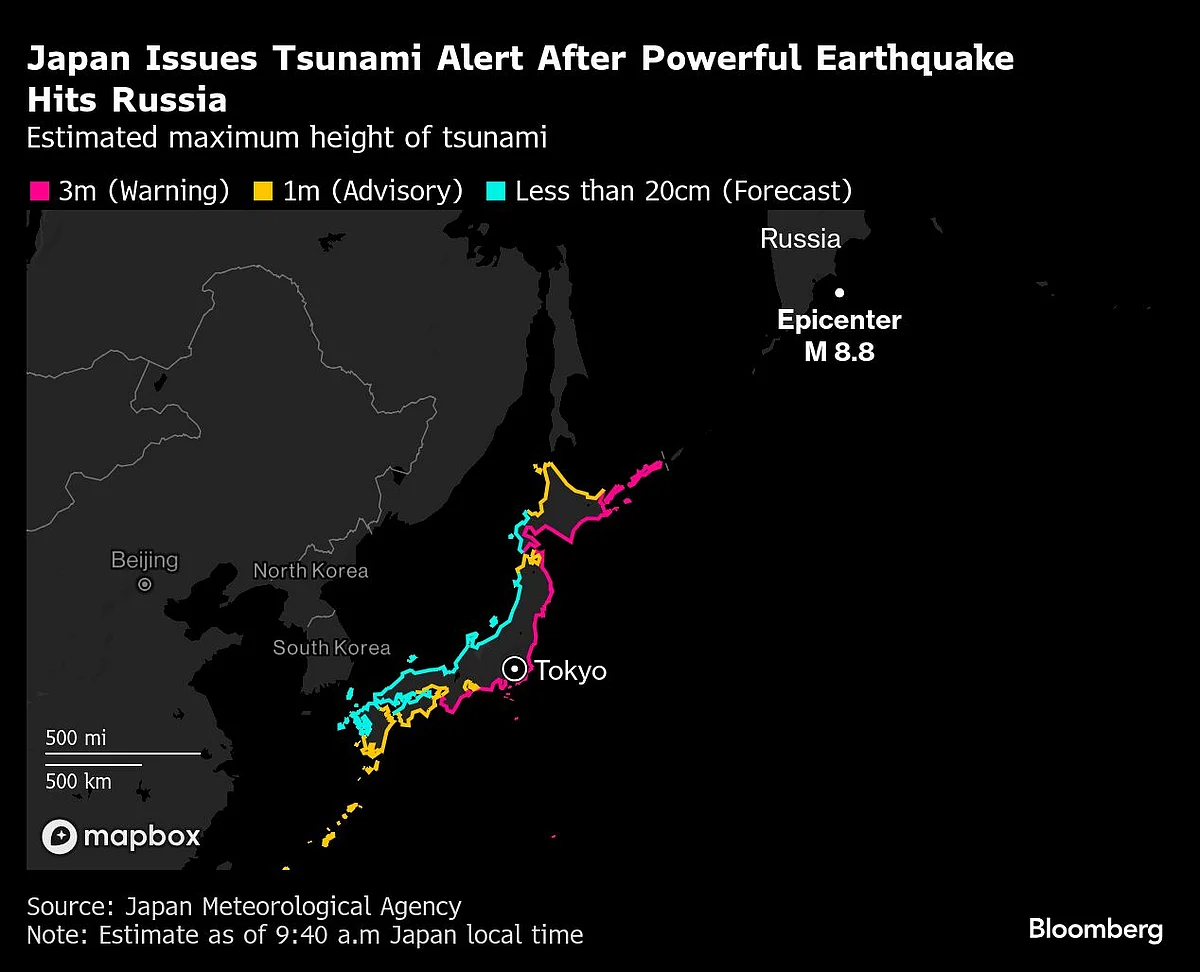US, Japan Issues Tsunami Warning Following Poweful Russia Earthquake
Waves as high as 4 meters (13 feet) and several injuries were reported by media in Russia after the magnitude 8.8 earthquake struck at a depth of 21 kilometers off the Kamchatka Peninsula.

The US, Japan, the Philippines and other countries were bracing for tsunamis after a powerful earthquake in Russia’s Far East.
The west coast of North America and Hawaii were under warnings to evacuate inland or to move to higher ground, according to the US National Oceanic and Atmospheric Administration’s Tsunami Warning System. Guam was also under a tsunami advisory.
Waves as high as 4 meters (13 feet) and several injuries were reported by media in Russia after the magnitude 8.8 earthquake struck at a depth of 21 kilometers off the Kamchatka Peninsula on Wednesday morning. Aftershocks continued in the region, the US Geological Survey said.
A 30 centimeter wave was detected in Japan’s northernmost region of Hokkaido, according to public broadcaster NHK. Parts of Japan could get waves as high as 3 meters, which could reach southern parts of the country within hours, according to the nation’s weather agency.
“The main thing is how the tsunami develops as it moves across the Pacific system,” said Harold Tobin, director of the Pacific Northwest Seismic Network, adding that Wednesday’s event was similar to a quake in the 1950s that caused “real damage and loss of life.”
In Hawaii, waves between 1 and 3 meters are expected to arrive just after 7 p.m. local time, according to NOAA. The Honolulu Department of Emergency Management urged the public to evacuate coastal areas, or to go to the fourth floor or above in buildings of at least 10 levels.
“A tsunami has been generated that could cause damage along coastlines of all islands in the state of Hawaii,” the US National Weather Service’s Tsunami Warning System said in a bulletin, calling for urgent action to protect lives and property.
In Japan, Prime Minister Shigeru Ishiba urged people in affected areas to evacuate. “It’s possible that the second, third and fourth waves of tsunami could be much bigger” than the first, he said, asking people to remain vigilant until the warning is lifted.

Japan is no stranger to tsunamis. In 2011, it was hit by a magnitude-9 quake off the northeastern coast, triggering waves of nearly 40 meters that destroyed coastal cities and claimed more than 20,000 lives. The waves overwhelmed Tokyo Electric Power Co.’s nuclear power plant in Fukushima, which resulted in a power failure and subsequent meltdown at the plant.
NHK switched from normal programming to show information about the warning and urged people to flee from the shore. The broadcaster showed cars heading away from coastal areas in Matsushima in Miyagi prefecture, northern Japan.
Sendai Airport, located in Miyagi, suspended flights and urged travelers to evacuate to the second floor of the terminal building. The nearby Onagawa Nuclear Power Plant, which restarted operations in December, is not currently impacted, according to a spokesperson from owner Tohoku Electric Power Co., adding that the facility has stopped all work by the port to prepare for tsunami’s arrival.
NOAA also flagged threats of tsunami waves of varying heights for some Pacific islands and nations, as well as more than a dozen countries including Chile and Peru. The Philippines has warned of potential waves of under 1 meter on Pacific-facing coasts.

